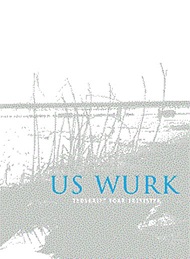Ferantwurding en útwurking fan noarmaspekten yn it Hânwurdboek I-II en yn it WFT
Abstract
In this article I investigate the ‘Justification and realization’ of norm issuesin the most current dictionaries of present-day West Frisian, namely the
Frysk Wurdboek; Frysk-Nederlânsk (1984; 19948), the Frysk Wurdboek;
Nederlânsk-Frysk (1985; 19966), commonly referred to as Hânwurdboek III/
Hwb I-II and the Wurdboek fan de Fryske taal 1-18 (WFT 1-18) (1984ff).
This article deals not so much with the (by definition subjective) concrete
interpretation of particular views on norm but rather with the justification
and realization of them. Hence, norm issues have to be understood here as
pertaining to the point of view that dictionary authors take on Frisian forms
that somehow are or can be related to Dutch, without necessarily having to
be interferences, and on dialectal forms, divided into the categories
phonology/pronunciation and morphology.
The issue not only has scientific but also practical relevance, which
directly relates to the concrete context of Frisian and its users. They often
feel insecure about the standard of that language, even ignorant. That is
partly connected to their imperfect knowledge of Frisian and partly to the
complex situation of the language. Nearly all speakers of Frisian speak
dialectal Frisian, which includes many interferences from Dutch, but when
they write in Frisian (a skill in which only a small percentage of the
Frisians is proficient), they use a more or less superdialectal Frisian, which
contains as little interferences as possible. If they want to know ‘what it
should ‘really’ be in Frisian’, Frisians understandably appeal to the
dictionaries. The Hânwurdboek I primarily fulfils that function, whereas
volume II especially serves as a translation dictionary Dutch-Frisian. The
very elaborate and descriptively set-up WFT mainly has a scientific
function.
To establish the more general justification of the norm issues I will
consult all information provided in the prefaces of the dictionaries at hand
(including ‘Instructions for the user’). The practical realization will be
evaluated using 212 pairs of forms/variants, of which 141 occur in all three
sources and the remaining 71 in the Hânwurdboek I as well as the WFT. I
will compare the justification of the norm and its realization where possible,
for the collective sources as well as for each dictionary individually.
The most important conclusions are that all three sources only touch
upon the object of their description and do not problematize it. Modulo
minor differences, they adopt a general, already existing norm for Frisian.
The problem of interference is not mentioned and dialectal variation is only
addressed in broad terms. The descriptive parts display huge differences in
the realization of the norm, not only between the Hânwurdboek I-II and the
relatively unrelated WFT, but also between the two, (according to the
preface to II) closely related, volumes of the first source. Volume I of the
Hânwurdboek is the least prescriptive, volume II the most, but the WFT
often prefers a specific form too, which is striking for a descriptive
dictionary. Another point is that the descriptions show quite some
inconsistencies, not only in comparison to each other but also internally
(especially the WFT).
Part of those differences and inconsistencies can no doubt be traced back
to the complex character of the Frisian language, with all its varieties and,
regarding the WFT, the great number of editors (20 until now). On the
other hand, it has to be concluded that a clear description of the object of
the dictionaries and hence of the norm chosen, as well as a systematic
investigation (possibly afterwards) into the actual description of similar
cases, could surely have created more uniformity and systematics within the
areas that I have dealt with here.

